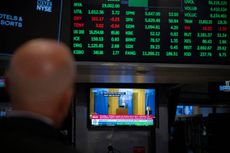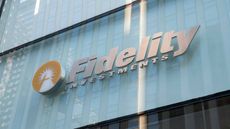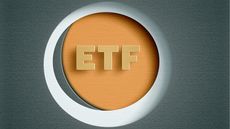The Trouble with Target-Date Funds in Retirement
They may not make sense once you're past the target date.


Target-date funds, those one-stop portfolios, are good options for retirement savers who are building their nest egg. But when you quit working, you may want to take a closer look at whether your target-date fund is still the right choice for you in retirement.
These autopilot funds are hugely popular, in part because they are often the default investment choice in 401(k) plans, with your money automatically directed to them unless you elect otherwise. Half of all 401(k) plan participants had some money stashed in a target-date fund at the end of 2014, according to the Investment Company Institute.
In a target-date fund, professional money managers make the decisions about how much of your portfolio should be devoted to stocks, bonds or other assets, and which funds to buy. Every year, the pros adjust the holdings to make the portfolio more conservative as you age. Each fund family follows its own so-called glide path for its series of target-date funds, changing the mix in stocks and bonds over time. After these funds hit their target year, some continue to adjust the stock-bond mix, typically for another 10 to 20 years, while others stop shifting entirely. This is the difference between a target-date series that shifts “through” retirement, and a series that shifts “to” retirement.

Sign up for Kiplinger’s Free E-Newsletters
Profit and prosper with the best of expert advice on investing, taxes, retirement, personal finance and more - straight to your e-mail.
Profit and prosper with the best of expert advice - straight to your e-mail.
That sounds simple and easy. But for retired investors, target-date funds may not be nimble enough. Here are four reasons it may be worthwhile to reassess your target-date fund holding when you retire.
The fund follows a “to” retirement glide path. Most target-date series follow a “through” retirement glide path. According to Morningstar, the four largest series by assets—Vanguard Target Retirement, Fidelity Freedom, T. Rowe Price Retirement and American Funds Target Date Retirement—hold 73% of all target-date fund assets. And each one takes a “through” glide path.
But if you are invested in a series with a “to” glide path that ends at retirement, you should take a careful look at how the portfolio is split between stocks and bonds to see if it matches your need for return and your risk tolerance. In the target year of JPMorgan SmartRetirement series, for instance—the fifth-biggest target-date series—the portfolio has 38% of assets invested in stocks, which falls below the average for all target-date funds. For some investors, that may be as much risk as they want to take. Others, however, may want to invest more in stocks, especially considering that retirement might last for decades.
In fact, the general idea behind target-date series that glide “to” retirement is that you’ll sell your shares in the fund when you retire and move the money to an IRA, where you have the freedom to invest in other assets, says Todd Rosenbluth, head of mutual fund and ETF research at CFRA, an investment research firm.
You’re a different investor today than you were in your thirties (or even your forties or fifties). After you retire, you may feel differently about risk. An investor’s tolerance for risk can change over time, especially after you leave your job, says Julie Virta, senior financial adviser with Vanguard’s Personal Adviser Services. For the first time in decades, you’re not building that nest egg of yours; you’re diminishing it. But Virta cautions investors not to be too conservative in retirement. “You’ll need some growth to maintain your spending,” she says.
A glide path that seemed reasonable when you bought the fund may be unacceptable now. The stock-bond divide varies among different series of funds throughout the glide path, but even more so in post-retirement years. According to Morningstar, the typical 2015 portfolio has 40% of assets invested in stocks, for instance. But the range for all 2015 target-date funds stretches from 15% in stocks to close to 60%. “Target-date funds are supposed to be one-size-fits-all, but no one really fits one-size-fits-all,” says Rosenbluth.
You may benefit from a more tax-efficient withdrawal strategy. Sell high, not low, right? It can pay to be strategic about which assets you sell to meet your cash needs. But that’s not an option if you have all of your retirement money in a target-date fund, where withdrawals are made proportionately, according to the portfolio’s prescribed allocation, across all of the fund’s assets. “Even though I love target-date funds for accumulators,” says Christine Benz, director of personal finance at Morningstar, “most all-in-one funds are suboptimal when it comes to retirement withdrawals because the investor doesn’t have discretion over where those withdrawals come from.”
You want more diversity. The predominant flavor in most target-date funds is plain vanilla. Although some funds may hold preferred stocks, convertibles, futures or options on commodities, for example, most of the money in target-date portfolios is divided between stocks, bonds and cash. That presents a challenge these days. With a low return outlook for both stocks and bonds, what’s a target-date fund investor to do? A customized approach to your portfolio in retirement might offer more flexibility. You could, for instance, hold more cash or invest in alternative investments that don’t move in lockstep with stocks or bonds.
You’ll also want to consider whether you’ll have too many eggs in one fund family’s basket. Fund firms often fill their target-date funds with “the family’s greatest hits,” says Rosenbluth. It’s up to the investor to determine if those funds are appropriate for them, he says, adding, “Do you want to buy all of your clothes at one department store?
Get Kiplinger Today newsletter — free
Profit and prosper with the best of Kiplinger's advice on investing, taxes, retirement, personal finance and much more. Delivered daily. Enter your email in the box and click Sign Me Up.

Nellie joined Kiplinger in August 2011 after a seven-year stint in Hong Kong. There, she worked for the Wall Street Journal Asia, where as lifestyle editor, she launched and edited Scene Asia, an online guide to food, wine, entertainment and the arts in Asia. Prior to that, she was an editor at Weekend Journal, the Friday lifestyle section of the Wall Street Journal Asia. Kiplinger isn't Nellie's first foray into personal finance: She has also worked at SmartMoney (rising from fact-checker to senior writer), and she was a senior editor at Money.
-
 Stock Market Today: Stocks Enjoy a Bessent Boost
Stock Market Today: Stocks Enjoy a Bessent BoostThe Dow closed at an all-time high as investors welcomed Donald Trump's Treasury secretary nominee.
By David Dittman Published
-
 Why Wall Street Likes Scott Bessent for Treasury Secretary
Why Wall Street Likes Scott Bessent for Treasury SecretaryMarkets are reacting positively to Trump's nomination of Scott Bessent for Treasury secretary. Here's why.
By Joey Solitro Published
-
 The 5 Best Actively Managed Fidelity Funds to Buy Now
The 5 Best Actively Managed Fidelity Funds to Buy Nowmutual funds In a stock picker's market, it's sometimes best to leave the driving to the pros. These Fidelity funds provide investors solid active management at low costs.
By Kent Thune Last updated
-
 The 12 Best Bear Market ETFs to Buy Now
The 12 Best Bear Market ETFs to Buy NowETFs Investors who are fearful about the more uncertainty in the new year can find plenty of protection among these bear market ETFs.
By Kyle Woodley Published
-
 Don't Give Up on the Eurozone
Don't Give Up on the Eurozonemutual funds As Europe’s economy (and stock markets) wobble, Janus Henderson European Focus Fund (HFETX) keeps its footing with a focus on large Europe-based multinationals.
By Rivan V. Stinson Published
-
 Best Bond Funds to Buy
Best Bond Funds to BuyInvesting for Income The best bond funds provide investors with income and stability – and are worthy additions to any well-balanced portfolio.
By Jeff Reeves Last updated
-
 Vanguard Global ESG Select Stock Profits from ESG Leaders
Vanguard Global ESG Select Stock Profits from ESG Leadersmutual funds Vanguard Global ESG Select Stock (VEIGX) favors firms with high standards for their businesses.
By Rivan V. Stinson Published
-
 Kip ETF 20: What's In, What's Out and Why
Kip ETF 20: What's In, What's Out and WhyKip ETF 20 The broad market has taken a major hit so far in 2022, sparking some tactical changes to Kiplinger's lineup of the best low-cost ETFs.
By Nellie S. Huang Published
-
 ETFs Are Now Mainstream. Here's Why They're So Appealing.
ETFs Are Now Mainstream. Here's Why They're So Appealing.Investing for Income ETFs offer investors broad diversification to their portfolios and at low costs to boot.
By Nellie S. Huang Published
-
 Do You Have Gun Stocks in Your Funds?
Do You Have Gun Stocks in Your Funds?ESG Investors looking to make changes amid gun violence can easily divest from gun stocks ... though it's trickier if they own them through funds.
By Ellen Kennedy Published